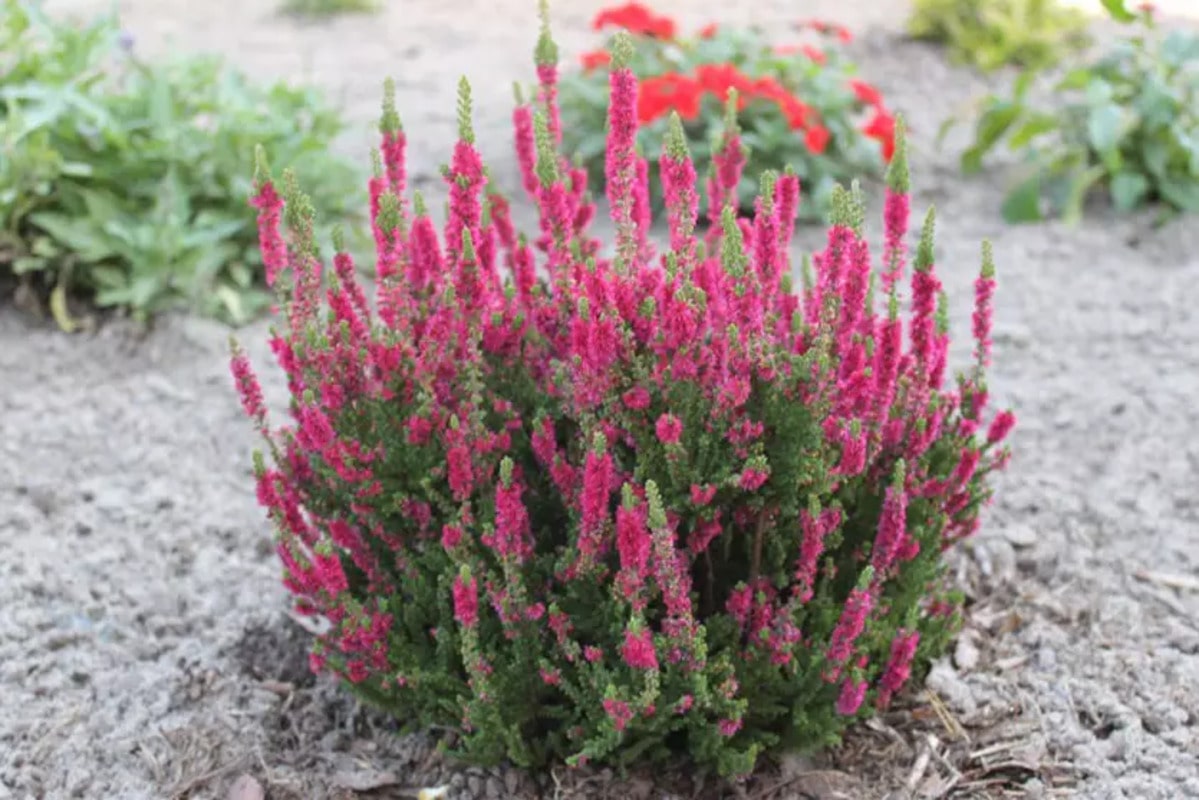Heather is a remarkably beautiful plant that brings a sense of calm and grace to the natural landscape. Its purple and pink carpets cover hills, moors, and forests, creating a fairytale-like view. This hardy plant has a long history, deep cultural significance, and numerous beneficial properties. These interesting facts about heather will help you discover why it has inspired poets, artists, and healers for centuries. Below are some of the most fascinating details you might not have known.
- Heather belongs to the heath family (Ericaceae) and includes over 800 species. The most well-known is the common heather (Calluna vulgaris). Its natural range covers Europe, Asia, North Africa, and even the coasts of Greenland. It thrives in poor soils and cool climates.
- Heather grows mainly on sandy and peat-rich soils where other plants often fail to survive. It forms dense shrubs that retain soil moisture and prevent erosion. Because of this, heather plays a vital role in preserving natural ecosystems.
- The flowers of heather are bell-shaped and come in various shades, from pale pink to deep violet. Some varieties have white or purple blooms. Heather blossoms from August until the first frosts, adding color and charm to autumn landscapes.
- Heather symbolizes loyalty, modesty, and independence. In Celtic culture, it was associated with the goddess of love and peace. In Scotland, white heather is considered a lucky charm and is often included in wedding bouquets.
- Heather honey is among the most valuable types of honey in the world. It has a thick, jelly-like texture and a slightly bitter, aromatic flavor. Rich in antioxidants, it is also known for its healing properties.
- Heather has long been used in folk medicine. Infusions made from its flowers are known to help with kidney and bladder problems and to calm the nervous system. It has antiseptic, diuretic, and anti-inflammatory effects.
- Heather is an excellent nectar source for bees, bumblebees, and butterflies. Even in cooler weather, when most plants stop blooming, heather continues to provide nectar. Heather moors are therefore a true paradise for pollinators.
- Heather is an evergreen plant, which means its leaves stay green throughout the winter. Even under snow, it maintains its color and shape, adding beauty to winter landscapes. This feature makes it a popular ornamental plant in gardens.
- This plant is extremely resilient and can survive in harsh environments where few others can grow. Its root system is capable of absorbing nutrients from acidic and nutrient-poor soils. For this reason, heather is seen as a symbol of strength and endurance in nature.
- The heather moors of the United Kingdom are not only ecologically important but also culturally iconic. They were immortalized in Emily Brontë’s novel Wuthering Heights, where heather represents freedom and wild beauty. Such landscapes have become a symbol of the English countryside.
- Heather is widely used in landscape design. It is planted on rock gardens, slopes, and along pathways. It pairs beautifully with coniferous trees, creating natural and harmonious compositions.
- In some countries, heather is used to make aromatic drinks and liqueurs. In Scotland, a traditional honey-based beverage is made from its flowers. Legends say that the first monks on the British Isles brewed beer using heather blossoms.
- Heather helps purify the air and soil. Its leaves absorb harmful substances, while its roots help restore ecosystems after fires or soil degradation. Thus, it plays an important role in environmental recovery.
- In ancient times, heather was believed to possess magical powers. Dried flowers were placed under pillows to bring prophetic dreams and ward off evil spirits. It was also thought to promote peace and emotional balance.
- Heather branches were once used as natural insulation. In the past, they served as bedding material or roof insulation. Their structure allowed them to retain heat and resist moisture effectively.
- Heather moorlands provide shelter to many rare bird and animal species. Grouse, owls, and wild rabbits nest and live among the shrubs. These habitats are crucial for maintaining biodiversity across Europe.
- Heather fields are valued not only for their ecological role but also for their stunning beauty. During the blooming season, they turn into vast, colorful carpets that attract tourists and photographers from all over the world.
- Heather is the national flower of Norway. It is admired for its simplicity and its ability to thrive in cold climates. For Norwegians, it symbolizes strength, endurance, and inner harmony.
- The scent of heather is often used in perfumery. Combined with woody, mossy, and lavender notes, it evokes freshness and the tranquility of nature. Such fragrances are associated with purity and serenity.
- Heather is also popular in floral design. Thanks to its durability, it stays fresh for a long time in bouquets and arrangements. It is often combined with grasses, berries, and dried flowers to create natural autumn compositions.
Heather is a true symbol of resilience, beauty, and harmony in nature. These interesting facts show that this plant not only adorns landscapes but also holds an important place in culture, medicine, and ecology. Heather reminds us that real strength often lies in simplicity and natural grace.





